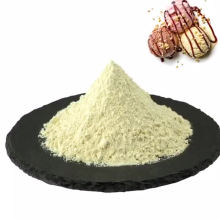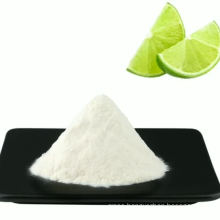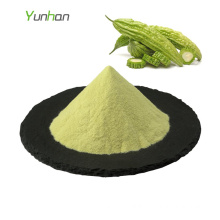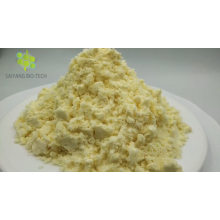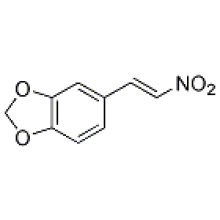DBeQ 177355-84-9
Product Description
.cp_wz table {border-top: 1px solid #ccc;border-left:1px solid #ccc; } .cp_wz table td{border-right: 1px solid #ccc; border-bottom: 1px solid #ccc; padding: 5px 0px 0px 5px;} .cp_wz table th {border-right: 1px solid #ccc;border-bottom: 1px solid #ccc; padding: 5px 0px 0px 5px;}
Molecular Weight: 340.42 DBeQ is a selective, potent, reversible, and ATP-competitive p97 Inhibitor with IC50 of 1.5 μM.
DBeQ blocks UbG76V-GFP, ODD-Luc and Luc-ODC degradation with IC50 of 2.6
μM, 56 μM and 45 μM in HeLa cells. DBeQ is at least 50-fold less potent
toward N-ethylmaleimide–sensitive factor (NSF) and 26S proteasome. DBeQ
inhibits p97 competitively with respect to ATP, with Ki of 3.2 μM,
suggesting that it binds to the active site of the D2 domain. DBeQ (10
μM) potently blocks degradation of TCRα-GFP in HEK293 cells. DBeQ
induces CHOP within 3 hours in a concentration-dependent manner but does
not increase p21 level in HEK293 cells. DBeQ (15 μM) induces a strong
accumulation of LC3-II in the nucleus plus membrane-enriched and
cytosolic fractions in Hela cells. DBeQ acts by blocking autophagic
degradation of LC3-II instead of inducing Autophagy in HeLa cells.
DBeQ
(10 μM) rapidly promotes activation of the [executioner" caspases-3 and
-7 in HeLa cells. DBeQ activates the intrinsic caspase-9 apoptotic
pathway more than the extrinsic caspase-8 pathway, whereas STS activates
both pathways to a similar extent. DBeQ is fivefold more active against
multiple myeloma (RPMI8226) cells than normal human fetal lung
fibroblasts (MRC5), with HeLa and Hek293 cells showing intermediate
sensitivities. DBeQ exhibits 20-fold selectivity for
stabilizing p97-dependent vs. independent UPS reporter substrates in
HeLa cells. DBeQ impairs degradation of substrates within the ERAD and
autophagy pathways.
DBeQ (12 μM) inhibits intracellular
neutralization in a dose-dependent manner in HeLa cells. DBeQ (10 μM),
which completely inhibits degradation of virus and antibody in the
fate-of-capsid experiment, fails to prevent degradation of IgG Fc. DBeQ
(9 μM) reduces the initial gradient of neutralization as a function of
antibody concentration. DBeQ decreases both basal and
nutrient-stimulated phosphorylation of MTOR targets similar to the
effects of rapamycin in U20S cells.
Rapidly and potently induces activation of executioner caspases and cell death.
Protocol(Only for Reference)
Kinase Assay: [1]
Cell Assay: [1]
Conversion of different model animals based on BSA (Value based on data from FDA Draft Guidelines)
For example, to modify the dose of resveratrol used for a mouse (22.4 mg/kg) to a dose based on the BSA for a rat, multiply 22.4 mg/kg by the Km factor for a mouse and then divide by the Km factor for a rat. This calculation results in a rat equivalent dose for resveratrol of 11.2 mg/kg.
Chemical Information
Contact us if you need more details on 177355-84-9 DBeQ. We are ready to answer your questions on packaging, logistics, certification or any other aspects about 177355-84-9、DBeQ 177355-84-9. If these products fail to match your need, please contact us and we would like to provide relevant information.
Molecular Weight: 340.42 DBeQ is a selective, potent, reversible, and ATP-competitive p97 Inhibitor with IC50 of 1.5 μM.
DBeQ blocks UbG76V-GFP, ODD-Luc and Luc-ODC degradation with IC50 of 2.6
μM, 56 μM and 45 μM in HeLa cells. DBeQ is at least 50-fold less potent
toward N-ethylmaleimide–sensitive factor (NSF) and 26S proteasome. DBeQ
inhibits p97 competitively with respect to ATP, with Ki of 3.2 μM,
suggesting that it binds to the active site of the D2 domain. DBeQ (10
μM) potently blocks degradation of TCRα-GFP in HEK293 cells. DBeQ
induces CHOP within 3 hours in a concentration-dependent manner but does
not increase p21 level in HEK293 cells. DBeQ (15 μM) induces a strong
accumulation of LC3-II in the nucleus plus membrane-enriched and
cytosolic fractions in Hela cells. DBeQ acts by blocking autophagic
degradation of LC3-II instead of inducing Autophagy in HeLa cells.
DBeQ
(10 μM) rapidly promotes activation of the [executioner" caspases-3 and
-7 in HeLa cells. DBeQ activates the intrinsic caspase-9 apoptotic
pathway more than the extrinsic caspase-8 pathway, whereas STS activates
both pathways to a similar extent. DBeQ is fivefold more active against
multiple myeloma (RPMI8226) cells than normal human fetal lung
fibroblasts (MRC5), with HeLa and Hek293 cells showing intermediate
sensitivities. DBeQ exhibits 20-fold selectivity for
stabilizing p97-dependent vs. independent UPS reporter substrates in
HeLa cells. DBeQ impairs degradation of substrates within the ERAD and
autophagy pathways.
DBeQ (12 μM) inhibits intracellular
neutralization in a dose-dependent manner in HeLa cells. DBeQ (10 μM),
which completely inhibits degradation of virus and antibody in the
fate-of-capsid experiment, fails to prevent degradation of IgG Fc. DBeQ
(9 μM) reduces the initial gradient of neutralization as a function of
antibody concentration. DBeQ decreases both basal and
nutrient-stimulated phosphorylation of MTOR targets similar to the
effects of rapamycin in U20S cells.
Rapidly and potently induces activation of executioner caspases and cell death.
Protocol(Only for Reference)
Kinase Assay: [1]
| Manual ATPase Assay | Assay Buffer [20 μL of 2.5× concentration, where 1× = 50 mM Tris (pH 7.4), 20 mM MgCl2, 1 mM EDTA, and 0.5 mM tris(2-carboxyethyl)phosphine (TCEP)] is dispensed into each well of a 96-well plate. Purified p97 (25 μL of 50 μM) is diluted in 975 μL of 1× Assay Buffer, and 10 μL is dispensed in each well. DBeQ (10 μL) or 5% DMSO (10 μL) is then added to each well, and the plate is incubated at room temperature for 10 min. The ATPase assay is carried out by adding to each well 10 μL of 500 μM ATP (pH 7.5), incubating at room temperature for 60 min, and then adding 50 μL Kinase Glo Plus reagent, followed by a final 10-min incubation at room temperature in the dark. Luminescence is read on an Analyst AD. DBeQ is assayed at a range of concentrations (0, 0.048, 0.24, 1.2, 6, and 30 μM) in triplicate. |
|---|
Cell Assay: [1]
| Cell lines | MRC-5, Hek293, HeLa and RPMI8226 cells |
|---|---|
| Concentrations | 33 μM |
| Incubation Time | 48 hours |
| Method | Cells are seeded on a 384-well solid white plate (5,000 cells/well). Cells are transfected with luciferase siRNA or p97 siRNA (10 nM) for 48 hours or treated with DBeQ for the indicated amount of time. Caspase-3/7 Glo, caspase-6 Glo, caspase-8 Glo, or caspase-9 Glo is added into each well and mixed by shaking at 500 rpm for 1 min. Luminescence signal is determined after incubation at room temperature for 1 hour. Cellular viability is determined with CellTiter-Glo reagen. To determine the IC50 of cellular viability, cells are treated with MG132 or DBeQ at seven concentrations (threefold serial dilutions starting at 33 μM) for 48 hours. IC50 values are calculated from fitting the percentage of luminescence signal normalized to DMSO treated cells). |
Conversion of different model animals based on BSA (Value based on data from FDA Draft Guidelines)
| Species | Baboon | Dog | Monkey | Rabbit | Guinea pig | Rat | Hamster | Mouse |
| Weight (kg) | 12 | 10 | 3 | 1.8 | 0.4 | 0.15 | 0.08 | 0.02 |
| Body Surface Area (m2) | 0.6 | 0.5 | 0.24 | 0.15 | 0.05 | 0.025 | 0.02 | 0.007 |
| Km factor | 20 | 20 | 12 | 12 | 8 | 6 | 5 | 3 |
| Animal A (mg/kg) = Animal B (mg/kg) multiplied by | Animal B Km |
| Animal A Km |
For example, to modify the dose of resveratrol used for a mouse (22.4 mg/kg) to a dose based on the BSA for a rat, multiply 22.4 mg/kg by the Km factor for a mouse and then divide by the Km factor for a rat. This calculation results in a rat equivalent dose for resveratrol of 11.2 mg/kg.
| Rat dose (mg/kg) = mouse dose (22.4 mg/kg) × | mouse Km(3) | = 11.2 mg/kg |
| rat Km(6) |
Chemical Information
| Molecular Weight (MW) | 340.42 |
|---|---|
| Formula | C22H20N4 |
| CAS No. | 177355-84-9 |
| Storage | 3 years -20℃Powder |
|---|---|
| 6 months-80℃in solvent (DMSO, water, etc.) | |
| Synonyms | JRF 12 |
| Solubility (25°C) * | In vitro | DMSO | 68 mg/mL (199.75 mM) |
|---|---|---|---|
| Water | <1 mg/mL ( | ||
| Ethanol | 5 mg/mL (14.68 mM) | ||
| | |||
| Chemical Name | 2,4-Quinazolinediamine, N2,N4-bis(phenylmethyl)- |
|---|
Contact us if you need more details on 177355-84-9 DBeQ. We are ready to answer your questions on packaging, logistics, certification or any other aspects about 177355-84-9、DBeQ 177355-84-9. If these products fail to match your need, please contact us and we would like to provide relevant information.
Product Categories : Ubiquitin > p97 Inhibitor
Other Products
Hot Products
Astragaloside AChlortetracycline HCl 64-72-2Paclitaxel 33069-62-4Dexamethasone Acetate 1177-87-3Dinaciclib (SCH727965) 779353-01-4CHIR-124 405168-58-3Ro3280 1062243-51-9TAME 901-47-3CCG-1423 285986-88-110058-F4 403811-55-2Dabigatran (BIBR 953) 211914-51-1H 89 2HCl 130964-39-5T0901317 293754-55-9Aprepitant 170729-80-3Turofexorate Isopropyl (XL335) 629664-81-9BMS-378806 357263-13-9
